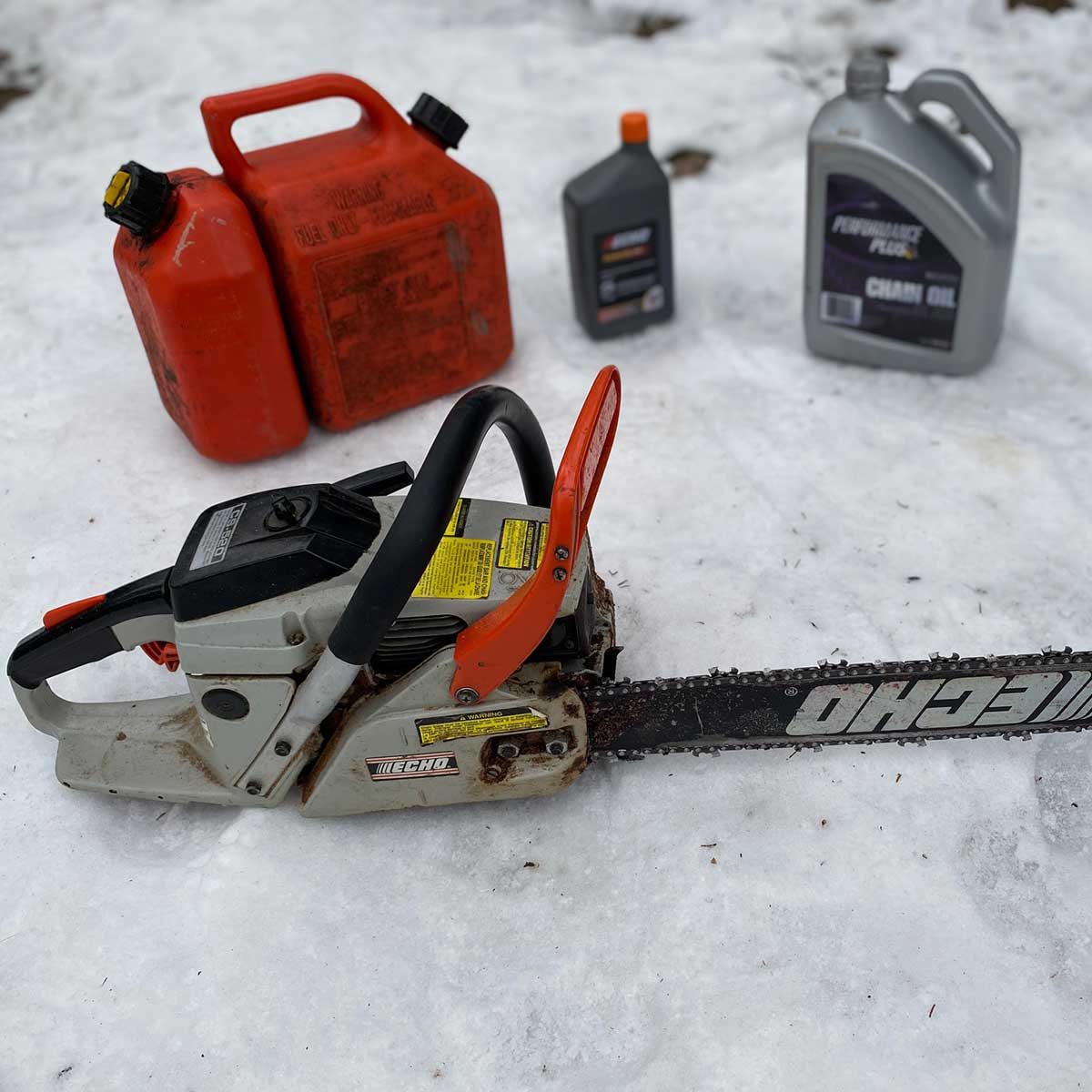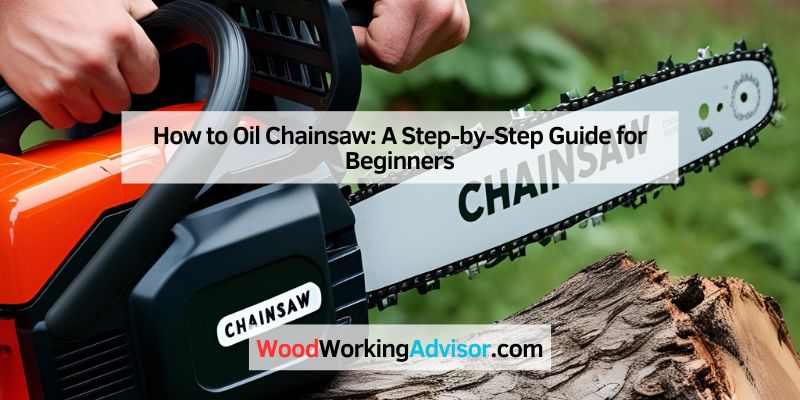Properly oiling your chainsaw is crucial for its longevity and performance. A well-oiled chainsaw operates smoothly and safely.
Oiling your chainsaw might seem like a simple task, but it requires attention to detail and proper technique. Without the right amount of oil, the chain can overheat, leading to wear and potential damage. In this guide, we will cover the essential steps to ensure your chainsaw runs efficiently and safely.
Whether you’re a seasoned professional or a beginner, understanding how to oil your chainsaw correctly will save you time and money. Let’s dive into the details and learn the best practices for maintaining your chainsaw’s health.

Credit: onevantool.com
Introduction To Chainsaw Oiling
Proper oiling keeps your chainsaw working well. It reduces friction and prevents overheating. Without oil, the chainsaw can break. Regular oiling makes the chainsaw last longer. It also helps in cutting smoothly. Always check the oil level before using your chainsaw.
Using the wrong type of oil can damage your chainsaw. Never use old or dirty oil. Over-oiling can also be harmful. It may cause build-up and clog the chainsaw. Forgetting to oil after each use is a common mistake. Always clean the chainsaw before oiling it. This ensures the oil works well. Keep the oil cap tight to avoid spills.
Gathering Necessary Supplies
Chainsaw oil is crucial. There are two main types: bar and chain oil, and engine oil. Bar and chain oil is thick. It sticks to the chain. Engine oil is for the motor. It keeps parts moving smoothly. Choose the right oil for your chainsaw. Read the manual.
Gather tools before starting. You need an oil container. A funnel helps pour oil. Have a clean rag ready. Use it to wipe spills. Keep a brush for cleaning the chain. A screwdriver is handy. It helps with adjustments. Safety gear is important. Wear gloves and goggles. Protect yourself from oil splashes.
Preparing The Chainsaw
Wear gloves and safety glasses. Make sure the chainsaw is off. Check the area for hazards. Keep children and pets away. Read the manual for specific instructions. Unplug the chainsaw if it is electric. Ensure the work area is well-lit. Have a first-aid kit nearby.
Use a brush to remove dirt. Wipe the chain and bar with a cloth. Check for damage or wear. Clean the air filter. Remove debris from the cooling fins. Inspect the oil reservoir. Ensure it is clean. Reassemble the chainsaw after cleaning.

Credit: www.familyhandyman.com
Locating The Oil Reservoir
The oil reservoir is usually near the engine. Look for a small, clear window or cap. This is where you add oil. The cap might have an oil symbol on it.
First, make sure the chainsaw is off. Then, find the reservoir cap. It’s usually on the side or top. Twist the cap to open it. Pour in the oil slowly. Don’t overfill.
Filling The Oil Reservoir
Use a clean container to measure the oil. Check the chainsaw manual for the right amount. Too much oil can cause leaks. Too little can damage the chainsaw. Follow the guidelines to keep your chainsaw in good shape.
Open the oil cap on the chainsaw. Pour the measured oil slowly. Be careful not to spill. Fill to the marked line. Close the cap tightly. Check for leaks. Now the chainsaw is ready to use.
Checking The Oil Level
Check the oil level before using the chainsaw. Keep the chainsaw upright and locate the oil reservoir. Add oil if the level is low to ensure smooth operation.
Using The Dipstick
To check the oil, use the dipstick. First, remove the dipstick from the oil tank. Wipe it clean with a rag. Next, insert the dipstick back into the oil tank. Pull it out again to read the oil level. The oil should be between the two marks on the dipstick. If it is below the lower mark, add more oil.
Interpreting The Oil Level
If the oil level is too low, the chainsaw may overheat. This can damage the engine. Too much oil can also cause problems. It may leak and make a mess. Check the oil level often to keep the chainsaw running well.
Maintaining The Oil System
Check the oil level before each use. Low oil can damage the chainsaw. Always use the correct oil type. Check the manual for this information. Look at the oil tank window to see the level. Refill if needed. Overfilling can cause leaks. Clean the oil cap and area before refilling. This prevents dirt from getting inside.
The oil filter helps keep the oil clean. A dirty filter can block oil flow. Remove the filter with care. Use a brush to clean the filter. Do not use water. Dry the filter before putting it back. Replace the filter if it is damaged. A clean filter ensures smooth oil flow.

Credit: www.youtube.com
Troubleshooting Common Issues
Oil leaks can be a real mess. Check the oil cap and make sure it is tight. Clean the area around the cap. Inspect the oil line for any cracks or damage. Replace it if needed. Keep your chainsaw upright when not in use. This helps prevent leaks.
Chainsaw not getting enough oil? Inspect the oil filter. Clean or replace it. Check the oil pump for blockages. Clear any debris. Ensure the oil tank is full. Low oil can cause poor flow. Use the right type of oil. It matters.
Frequently Asked Questions
Where Do You Put Oil In A Chainsaw?
To add oil to a chainsaw, locate the oil reservoir cap. Open it and pour bar and chain oil until full.
How To Oil A Chainsaw By Hand?
Apply bar oil directly onto the chain and bar. Manually rotate the chain to distribute the oil evenly. Repeat as needed.
Is It Okay To Put Wd-40 On A Chainsaw Chain?
No, it’s not recommended to use WD-40 on a chainsaw chain. Use proper bar and chain oil instead.
How Often Do You Oil A Chainsaw Chain?
Oil the chainsaw chain before each use to ensure optimal performance. Regular lubrication keeps it running smoothly and prevents wear.
Conclusion
Properly oiling your chainsaw ensures smooth and safe operation. Regular maintenance extends the life of your tool. Check and refill the oil reservoir often. Clean the bar and chain to remove debris. Use the right type of oil for best results.
Follow the manufacturer’s guidelines. Stay safe and enjoy your woodworking projects. A well-oiled chainsaw makes all the difference. Happy cutting!

